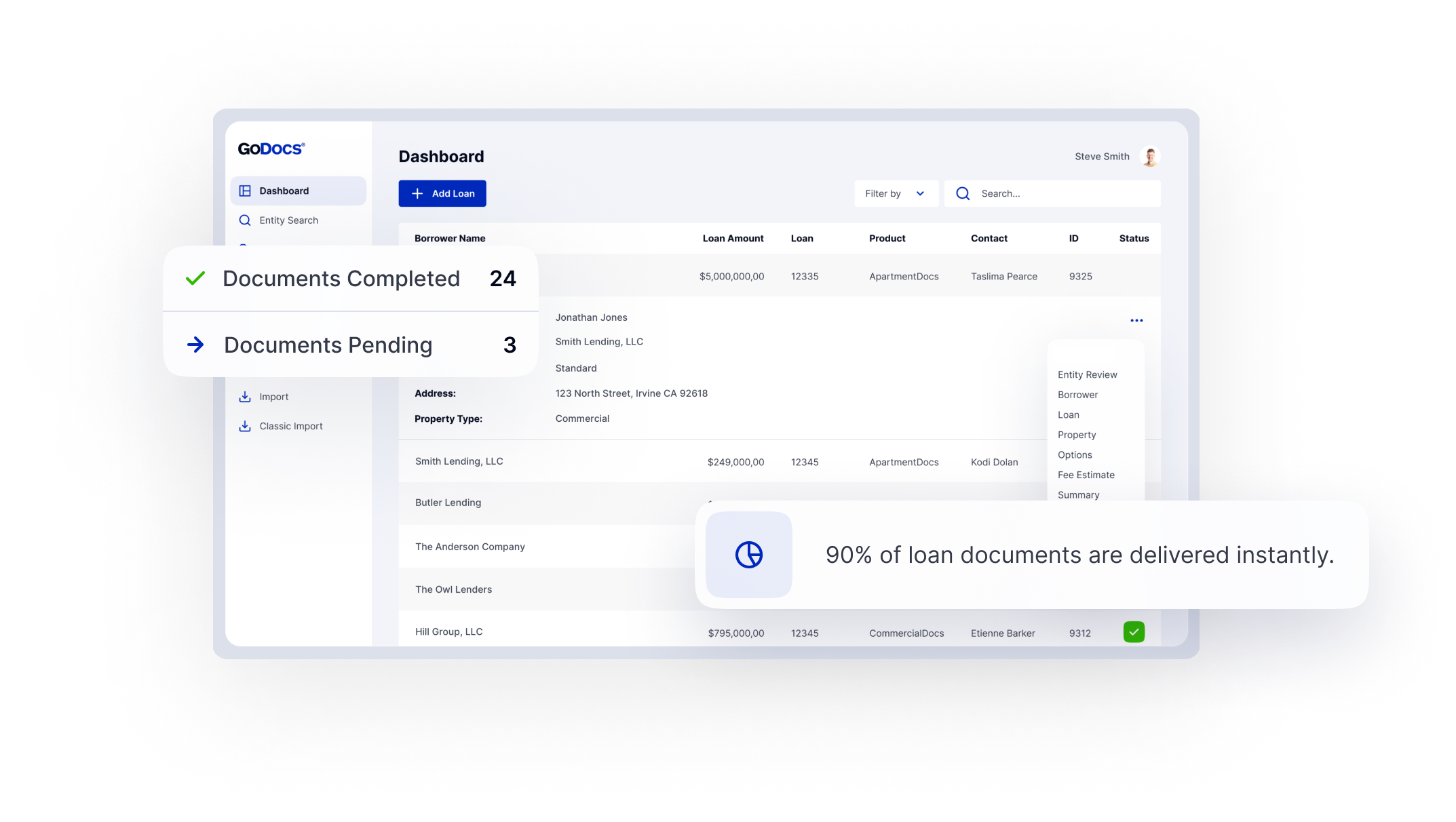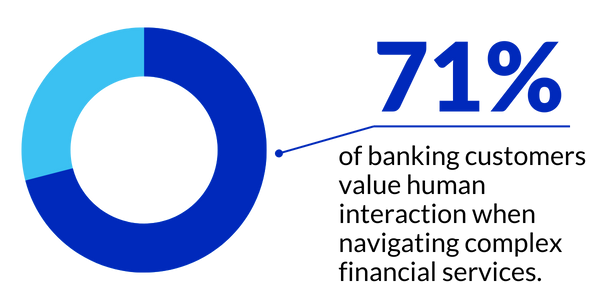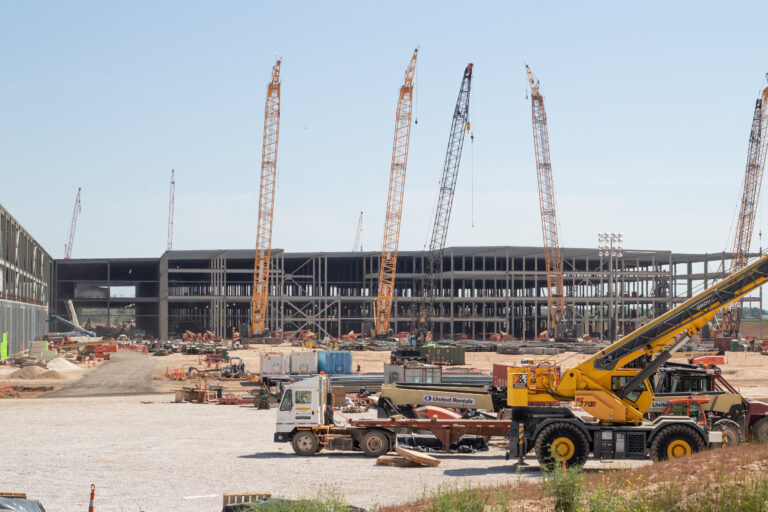There’s a big question looming in commercial lending that requires an answer:
Are commercial lenders ready for the digital era?
This isn’t an intellectual exercise. Commercial lending— at long last, many would say— is on the brink of a digital revolution. Whether or not commercial lenders keep pace remains to be seen. While this industry and similar niches across finance and banking have historically dug their heels in against Industry 4.0, it seems clear now that digital momentum is building. It’s not only institutions that are learning to keep up; tech innovators themselves are turning their attention to the space.
Why Now? The Right Time for Digital in Commercial Lending
Commercial lending experienced growth rates in the double digits in the years following the crisis of 2008. Multifamily lending has proven to be a particularly dynamic area of growth, with forecasts estimating an increase of nearly half a trillion dollars in 2022. It’s a new record for the space by almost 5 percent. Borrowing and lending numbers should be no less impressive in the year to come, with estimates placing commercial real estate lending over 1 trillion USD. In addition, the home construction industry is now a $1.3 trillion USD industry.
While these numbers are hugely positive, the competitive landscape is shifting quickly. As recently as 2020, large financial institutions and regional banks still dominated the market. In the last few years, however, fintechs and smaller competitors in the digital space have redefined the industry, offering innovative tech, faster delivery, and an enhanced customer experience.
Any tech however advanced, though, cannot fulfill its potential without dedicated user adoption. Perhaps the time is now right for digital transformation in commercial lending because the borrower now expects it.
Having experienced the elimination of pain points (and, frankly, often total delight) via digital technologies for years now, no borrower can be expected to tolerate analog, legacy solutions. That these legacy processes only drag out the timeline for everything from application to closing only compounds the issue. After all, today’s savvy commercial borrower expects things done well and quickly. Clients are ready to jump ship for institutions that offer innovation. Commercial lenders need to understand this and extend a frictionless client experience.
On the lender side, digital transformation is required to keep pace with competitors. To do that, lenders need a way to increase loan volumes without increasing staff and overhead. Digital solutions will allow commercial lenders to maintain their competitive edge without increasing operational costs.
Schedule a custom demo to learn more about GoDocs’ digital solution for closing commercial loans.
Addressing the Complexities in Process
The complexity of commercial lending processes is often cited as one reason to take things slowly when transitioning to the digital. By addressing these ‘complexities’ brick by brick, however, digital vendors are finding unique ways to transform the space.
Rather than generate holistic solutions, digital innovators in commercial lending are addressing individual processes. Vendors are digitizing and streamlining anything from the intake of documents during the loan approval process to documentation during closing.
As an example, one leader in automation, GoDocs, focuses on commercial loan document preparation. Built by seasoned commercial real estate attorneys, the solution provides a frictionless process for loan document preparation that is fully automated and requires no editing on the back-end. By innovating on this single pain point in the commercial lending process, the company is able to address multiple sectors within commercial lending, including construction loans.
Digital Documentation in Construction Loans: A Case Study
In addition to addressing multifamily and C&I loans, GoDocs is the only loan document automation system with a broad Construction Loan capability, including ground-up, fix & flip, major rehab, modest rehab, and minor rehab projects. Rehab provisions built into the integrated solution include detailed construction monitoring, disbursement controls, and mechanics lien protections.
As is often the case in commercial lending, construction lending operates within a framework of multiple moving parts, many of which can potentially operate at a slow pace. This includes lender identification, financing, loan processing, loan closing, progress reporting, draw disbursements, on-demand payment to contractors, and system integrations.
A Digital Transformation Case Study
Leveraging digital lending technologies to accelerate growth and leapfrog the competition in the non-QM market.
Can digital automation streamline these commercial lending operations?
Yes. Digital technology is imperative for commercial construction lending to keep up with the marketplace. By furthering the digital landscape, this type of technology will streamline company lending logistics so that commercial construction lending can advance alongside the rapidly advancing systems of operations this technology provides.
A Profitable Future
The future of commercial construction lending is looking bright— if digital technology is setting the pace. With ROI on fix & flips at 92.6% currently, solutions that streamline loan packages in this subset of commercial lending can clearly translate into real money for commercial lenders. The elimination of work hours on high touch processes and the reduction of attorney fees experienced through solutions like these makes that doubly true. Finally, that these solutions zero in on smaller components of the larger process “nightmare” that is commercial lending makes them easier for any commercial lender to adopt and implement without making complex holistic changes.
The Digital Era is Here
The time is now for digital transformation in commercial lending. This is the era in which borrowers have far more lender options for their CRE loans because of the exponential rise of private lenders. This is the era of unprecedented commercial loan volumes due to the boom in single family rental property acquisitions by Goliath investors as well as legions of smaller investors. And this is the era where borrowers demand lower costs, faster closings, better experience, and all the other digital services that modern shoppers (and yes borrowers are shoppers) have to come to expect with every service today – they demand the digital experience. This means they want digital services without losing any of the flexibility (loan types, financing and payment options, deal complexity, collateral complexity, etc.) required to complete a transaction.
End-to-end Transformation
Transformation won’t be piecemeal. End-to-end digital solutions for commercial lending of all types, including commercial, multifamily, and 1-4 unit business purpose loans, regardless of their complexity, will drive the digital future in the space.
A true end-to-end solution will encompass lender identification, digital financing, and loan closing automation. These solutions, too, will integrate easily with existing workflows and processes, adapting to the demands of banks, credit unions and private lenders and sidestepping painful scenarios in which these institutions have to adopt new LOS and banking systems, thereby slowing adoption and delaying ROI. With these solutions in place, loan volumes will scale up easily, no matter the size of the institution.
Credit unions, as an example, will benefit as dynamically as big banking institutions from this digital transformation. In the never-ending balancing act between risk and reward, credit unions will be able to leverage digital technologies to expand commercial lending and increase their regional impact. Digital solutions at credit unions will address member expectations around mobile and digital apps while also giving these institutions powerful ways to support mobile work internally.
Of course, all success in this digital future depends on how adept lenders are at staying pace with transformation. The time is now to begin aligning with future practices. Automation is no longer a luxury, but a necessity for entities in commercial lending. As lending continues to evolve through digital technologies, financial institutions will access more and more opportunities to increase loan volumes and revenue.
So are commercial lenders ready to give borrowers a fully digital experience, lower costs, deliver a very fast turnaround, and offer all the flexibility required by borrowers while still participating and benefiting from this unprecedented high volume market opportunity that exists today and likely for the next decade?
If lenders are not ready and must continue to lend in a mostly analog (labor, high touch, lots of attorney time and expense) then competing will be harder than ever and customer retention will be harder than ever. Equally as bad, a once-in-a-generation CRE boom market will be missed.







